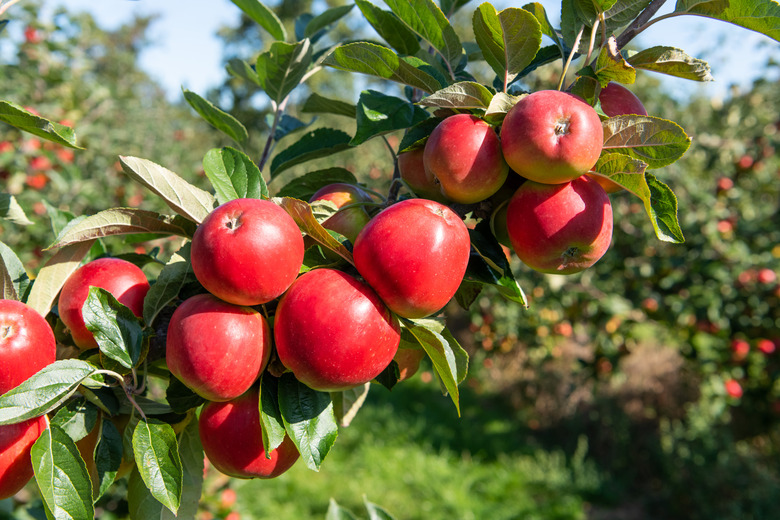How To Clone Fruit Trees
Cloning trees simply means making exact copies of existing trees. Exact copies can't be grown from seeds due to the fact that seeds mix genetic material from two different trees. The way to make cloned trees from fruit trees is by taking a cutting from it and rooting the cutting or grafting that cutting onto a root stock, which is the preferred propagation method for fruit trees.
Although there are different types of grafts, the Texas A&M AgriLife Extension notes that the the whip-and-tongue graft typically is used for cloning apple trees and other types of fruit trees. Grafted fruit trees will bear the exact same size fruit with the exact same taste as the parent tree from which the cutting was taken, above the point at which the graft was made.
1. Take a Cutting
To clone an apple tree or other type of fruit tree, cut the tip of a branch of a good fruit tree, one that produces excellent fruit. This is the tree you will be cloning. The tip should be new growth (this season's) and should be approximately 4 to 6 inches long and about the same diameter as the trunk of the root stock you will be grafting it to. Remove any leaves within the first 2 inches of the cut end.
2. Choose a Root Stock
Select a root stock to graft your cutting (scion) into. The root stock should be from the same tree species (graft apple to apple roots, oranges to orange tree roots, etc.). Plant your root stock where you wish your tree to grow or you can perform the graft while the root stock is growing in a container.
3. Cut the Scion
Make a sloping diagonal cut in the scion at the cut end. This cut will make the scion come to a somewhat sharp point. Cornell University recommends making this diagonal cut from 1 to 2 inches long.
4. Cut the Root Stock
Make a similar diagonal cut in the root stock just below the first leaf or branch. Again, make the diagonal cut about 2 inches long. This will entail, in effect, cutting off the top of the root stock.
5. Fit Scion and Stock Together
Make second cuts through the rootstock and scion, cutting vertically about half as long as the first diagonal cut so that the rootstock and scion fit together like puzzle pieces.
6. Bind Graft with Tape
Wrap grafting tape (available at any nursery) around the two pieces, starting on the root stock and winding your way up. The tape should hold the two pieces together firmly.
7. Seal Graft with Wax
Cover the wrapping and a bit of the root stock and the scion with grafting wax. Cover the area to keep it from drying out.
8. Remove Wax and Tape
Keep the soil moist and allow your tree to get plenty of diffused sunlight during the day. Once new leaves begin to grow from the scion, remove the grafting wax and the tape.
Tip
It is vital that the cambial wood on your scion aligns as much as possible with the cambial wood on the root stock in order for the graft to take.
Things Needed
- Branch cutting (scion)
- Root stock
- Very sharp knife
- Grafting tape
- Grafting wax
